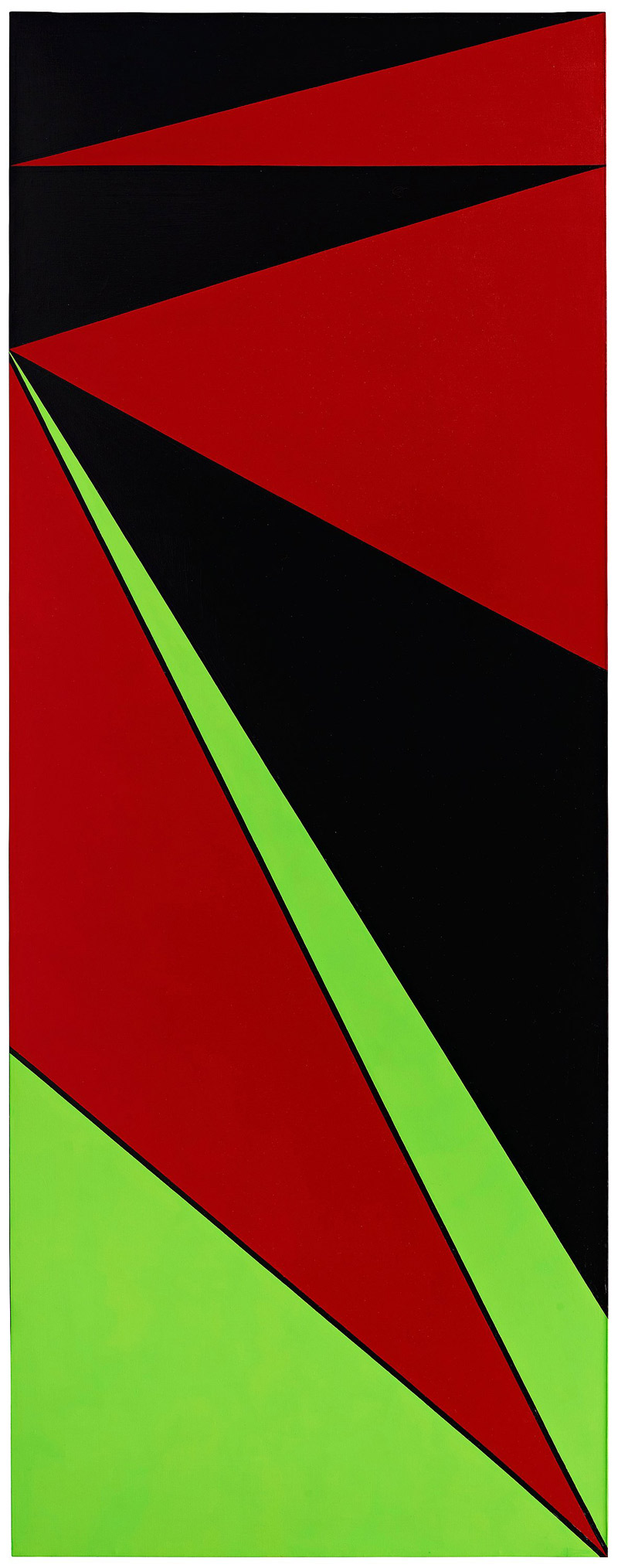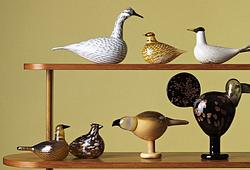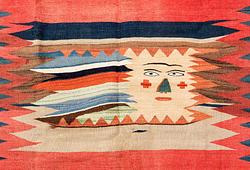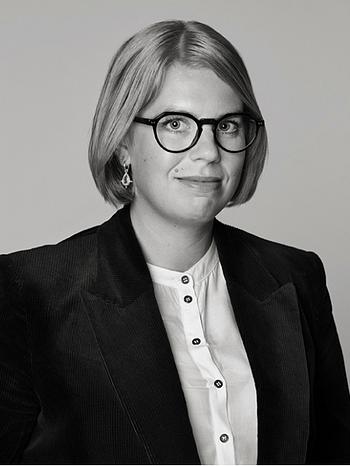The humanist who created his own universe
Modern Art & Design presenterar
Olle Bærtling, "Mithra""
It has always been difficult to simply place Olle Bærtling's body of work in a specific -ism or artist grouping in Swedish art history. He was an independent artist that staked out his own path in both life and in art.
Olle Bærtling felt for a long time that there was resistance to his art, he was "the constantly disputed banker who was trying to paint", in Sweden. Many artists have, of course, experienced resistance when they innovatively and creatively presented something new to the audience, but in Bærtling's case, one can perhaps feel that it was unfair and small-minded since he, unlike many of his contemporary artists, reached far beyond the borders of his home country in his lifetime.
With exhibitions all over the world from the 1950s until his death in 1981, Bærtling places himself on his own internationally known level as a Swede, where one can mention a few others such as Öyvind Fahlström and Claes Oldenburg.
The 1950s were Olle Bærtling's most important decade. During the first years of the 50s, he took longer and longer holidays from his banking job at Skandinaviska Banken and travelled to Paris. There, in the Mecca of art, he came into contact with the new art world at the Salon des Réalités Nouvelles and sought out artists such as André Lhote, Fernand Léger, Victor Vasarely, Richard Mortensen and Auguste Herbin. The latter was absolutely crucial for his continued development as an artist. Herbin introduced Bærtling to the forward-thinking gallerist Denise René who immediately installed Bærtling in her 'stable' of Constructivists”.
Bærtling abandoned OP-Art, which had been inspiring him for some time, and started creating his own style where triangles and diagonals were the main themes. Once Bærtling swears off the figurative, he begins to "construct" paintings. From basic geometric elements, he created a new visual world of measurement ratios, proportions and synthetic, programmed colour tones. Everything is carried out methodically, the geometric instinct takes over and "the open form" is born. In the concept of "the open form", Bærtling strove to depict space and movement through his geometric shapes that continue outside the surface of the image, everything that was on the image surface is brought out to the edge of the frame and beyond.
In an essay titled “Swedish art after 1945”, the art critic Olle Granath wrote:
“The acquaintance with Auguste Herbin showed Bærtling the way to non-figurative painting, that he would soon give his personal touch with unfinished, triangle-like shapes and powerful, divergent colours. The unfinished triangles, what Bærtling himself called “open form” contributes to the feeling that one never experiences any relationship between fore- and background in the paintings. A relationship that Bærtling views as “Naturalism”.
The central goal for him was to eliminate any possible reference to anything outside the picture itself. The expression of the image only exists in the tension between colours and shapes. The contours and lines in black that separate the fields of colour are not straight as they first appear, but slightly arced to offset the optical expansion and contraction of the colour tones. In this way, he builds up an excruciatingly tense image, which excludes any experience of decoration.”
A very accurate description of Bærtling's work. Olle Bærtling did not want to remake the world. He wanted to bring out dynamic forces that strengthen us as individuals according to our needs and abilities. He has been described as a humanist who created his own universe. Unlike the Modernists of the early 20th century, he did not want to change the world with his art.

In an article in the magazine Arkitektur, Bærtling writes: “The creative artist is free and has to be in his creativity. He has nothing to do with anything else, the social, the political, etc. Nothing at all to do with society and its compromises. He deals only with the inner reality, the forces that govern everything, invisible, but nevertheless man's greatest source of power and real reality, the prerequisite for all progress, creator of the culture we call ours.”
Bærtling enters a new phase in his production when he, in 1955, creates his richest and most important series, ”Le triangles asymétriques”. He twists the overall context out of horizontal and vertical mode by creating vertical and horizontal diagonals in one and the same work. This new composition requires a larger scale, and the "giants" are added, a suite of large impressive canvases exhibited around the world. The first work with a hint of vertical/horizontal composition is "Yama" 135 x 350 cm, where he combines the vertical triangles with horizontal ones and a new component, a narrow angular shape inserted into the image. The painting was the main eye-catcher at the "Bærtling-Jacobsen-Mortensen" exhibition "Konkret Realism" at Liljevalch's Konsthall in Stockholm in 1956.
After “Yama”, a few smaller works sized 299x131/131x299 cm were added, ”Primus, ”Primusparis” and ”Aton”. These were closely followed by three impressive canvases in both landscape and portrait orientation such as ”Rudra” (135 x 350), ”Indra” (350 x 135) and the painting ”Mithra” (350x135) now being presented for auction. In 1957 he exhibits an additional three monumental works, insignificantly larger than the earlier ones, at Galerie Denise René in Paris; "Arnero", "Arisi", and "Arisibk". This entire suite of monumental works produced between 1955-1957 foreshadows what is to come in the following years when Bærtling received a series of public commissions, including the entrance to the first "skyscrapers" in Stockholm, the Hötorget building, and a series of monumental works for the Stockholm University campus in Frescati.
The titles of Bærtling's works from the 1950s are inspired by religion and mythology. “Mithra” was the name of an old Persian deity, “Aton” is the ancient Egyptian sun god. Bærtling's “Mithra” reflects everything that the artist aspired to achieve in the 1950s; the angular shapes are gathered together so that a system of rays radiates over the canvas. The points converge in a corner which pulls the gaze inward, a loaded point which then throws the gaze back in a forceful recoil. Elongated triangular shapes empower the visual experience and bring the law of action and counteraction to a new level. one is sucked into the triangles, which become explosive and almost take the viewer's breath away. The strong colours contribute to the experience.
”Mithra” is one of the most important works in Bærtling's famous ”Le triangles asymétrique”. It is a monumental artwork that was created by a fearless artist who found his own way and dared to step into the unknown. A rarity created during the important year 1955 when Olle Bærtling was at the height of his creativity.
To be sold at Modern Art + Design. Estimate: 1 500 000 - 2 000 000 SEK.
When is the viewing and auction?
Viewing November 10–15th, Berzelii Park 1, Stockholm
Auktion Live November 16–17th, Arsenalsgatan 2, Stockholm
To the work
Explore the catalogue

Other Bærtling works in the current auction
Requests & condition reports Contact specialist


































